It’s now less than 2 weeks until hotels re-open. Our first walkers on self-guided packages set off from their hotels on May 18. We have seen a surge in demand for bag transfers. So let us know your itinerary and we’ll get straight back to you.
Whatever your arrangements when walking this year, why not share your photos on our Facebook Group. It’s a private group so posts and photos are only visible to members. So why not join. We have over 100 members already.
After a very dry April we have finally had some rain. The Path is refreshingly muddy and damp in places. River levels are normal.
If you are on the Path this Saturday (May 8), look out for runners who will be competing in the Thames Path 100 from Richmond to Oxford.
Sad to report that the finger-post sign at the Source of the Thames has been torn down and someone has had a camp fire. No prizes for guessing what happened to the sign!
We reported last week that diversions were in place between Clifton Hampden and Dorchester. On walking the Path this week it turns out that it is a footpath leading away from the Thames Path that is diverted. The Thames Path itself is not diverted.
A major fire broke out during the week at Platt’s Eyot, an island in the Thames as you approach Hampton Court. Plumes of smoke could be seen throughout London. The island is mainly used for boat building. Two listed buildings have been destroyed as well as two ships that featured in the evacuation of Dunkirk.
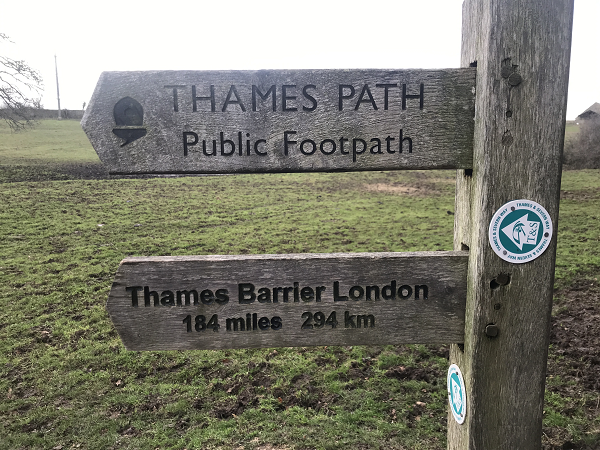
Chelsea Physic Garden will be celebrating Garden Day this coming Sunday with a flower crown making event. Click here for more details.
An audio guide and map around the South Bank, Waterloo has been published. It shows how the site looked when the Festival of Britain was hosted in 1951. The Festival site was subsequently developed into the South Bank Centre, comprising the Royal Festival Hall, the National Film Theatre, the Queen Elizabeth Hall, the Purcell Room and the National Theatre. Thames Path walkers will be familiar with the site when walking on the right bank between Westminster and Tower Bridge.

Some further hotel openings and closures to report:
The Fleur-de-Lys in Dorchester, which was uncontactable last year, seems to have resurfaced. They offer competitively-priced ensuite rooms. The hotel has been categorised as “bronze”.
The Flower Pot in Aston has, for this year anyway, decided not to re-open as a hotel. The pub service is continuing.
A few miles downstream of Aston, the Olde Bell at Hurley has re-opened following extensive refurbishment. They have a variety of rooms. The hotel has been categorised as “silver”.
The route planner has been updated for all these changes.
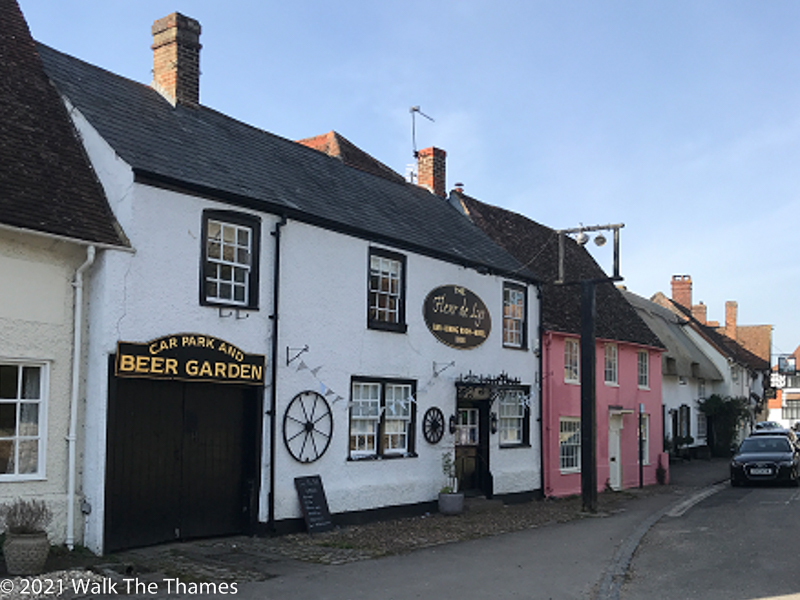
There have been reports of red kites swooping down to grab food from outside tables at Benson. Kites are prominent birds of prey between Oxford and Reading and can be quite fearless.
Goring Gap Wildlife Walks posted rare footage of mink on the Thames. This can be seen on Twitter. They offer guided walks from Goring along the Thames Path. You can find out more details on our Experiences page.
Following heavy rains, the Henley Toad Patrol found themselves out on duty once more, escorting a further 200 toads across the busy A4155.
Two raven chicks have been born at the Tower of London from proud parents Huggin and Muninn. One has been named Edgar, after Edgar Allan Poe. You can vote on the name of the other, a female, from the following: Matilda, Branwen, Bronte, Winifred and Florence.
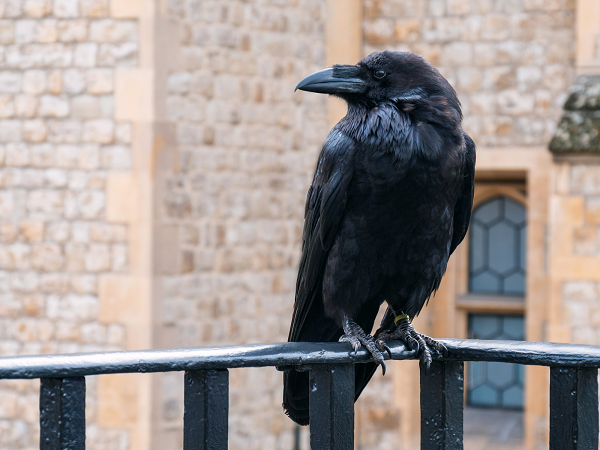
The church of St Sampson in Cricklade has been awarded a £10,000 grant from the National Churches Trust to repair the nave’s roof. The church features in Simon Jenkin’s Thousand Best Churches. In case you’re wondering, Sampson was a saint from Brittany, France.
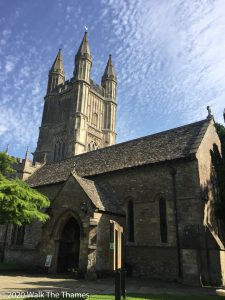
We’re doing things a little differently this week. Rather than walk down a stretch of the Thames, we’re taking a closer look at Wittenham Clumps, a pair of hills just off the Thames Path. This will likely be the format of the newsletter throughout the walking season.
As you walk down the Thames Path past Clifton Hampden, the Clumps appear in the distance on your right. Standing at just 400 feet high, they are by far the highest land around – which gives you some indication of how flat the surrounds are.
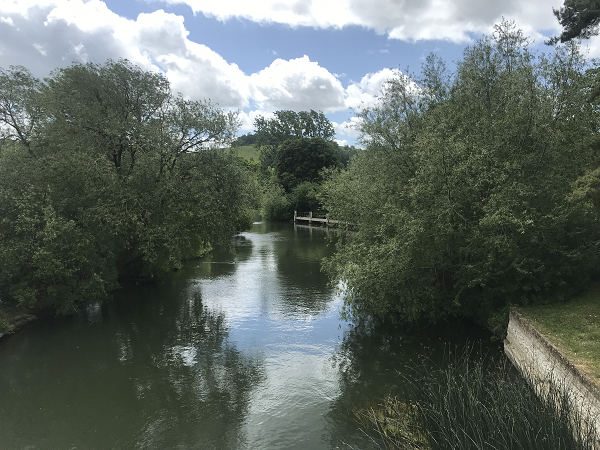
Whilst clearly not on the route of the Thames Path (this is a river walk not a ridge walk!), the Clumps are just a short stroll from the river at Days Lock by Dorchester. A 1.8 mile detour across Little Wittenham Bridge will take you to the top of both and back again through Little Wittenham Wood. For details of the route, see our detours page.
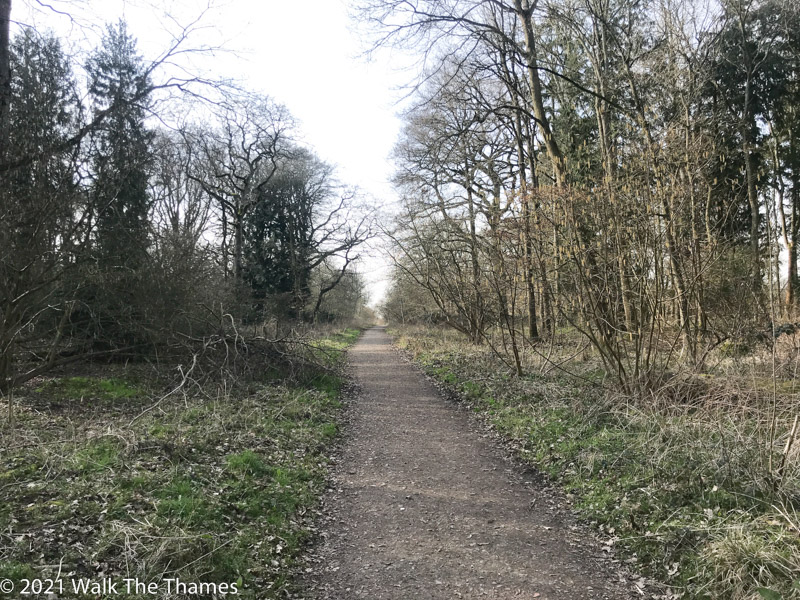
The Clumps are made up of Round Hill (to your right from the Thames Path) and Castle Hill. The hills are chalk, and the trees standing at the top – which is why they’re called clumps – are beech. Cowslips adorn the slopes.
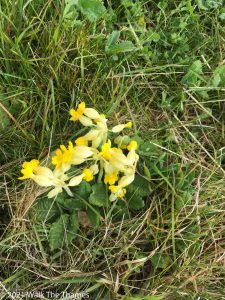
The hills were once the site of ancient civilisations: Bronze then Iron Ages followed by Romans. It was during the Roman occupation that nearby Dorchester became a town. The choice of location must surely have been for defensive purposes. Water would have had to be fetched from springs further down the slopes. From a certain angle you can see evidence of earthworks that created a defensive rampart.
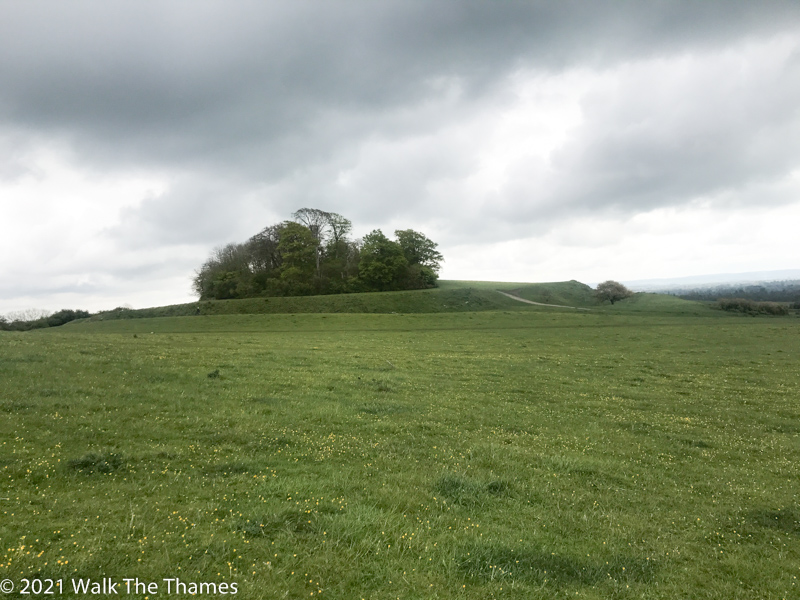
It’s a short walk to circle both clumps and you will not be disappointed with the views. In one direction is Faringdon Folly, a reminder of the land from which you’ve walked upstream of Oxford. Nearer is what is left of Didcot Power Station, closed a few years ago and slowly being dismantled. In the other direction is the Thames stretching north towards Oxford. The large body of water you see are reservoirs that you will not be aware of as you walked by the Thames.
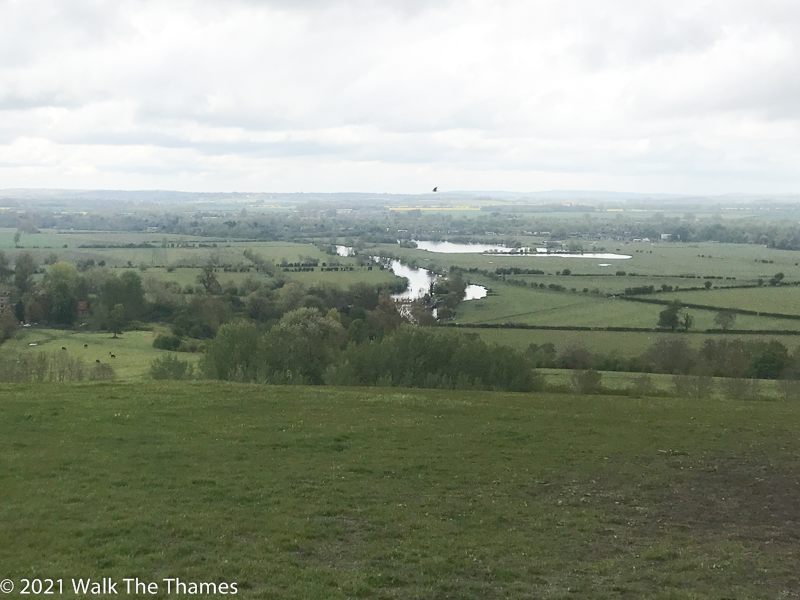
The Clumps are managed by Earth Trust who deserve a big “shout out”. They are involved in a lot of projects in the area including Clifton Hampden and Wallingford. Their visitors centre is just the other side of the Clumps.
That’s all folks. See you on Facebook!
Ready to book?
| Cookie | Duration | Description |
|---|---|---|
| cookielawinfo-checkbox-analytics | 11 months | This cookie is set by GDPR Cookie Consent plugin. The cookie is used to store the user consent for the cookies in the category "Analytics". |
| cookielawinfo-checkbox-functional | 11 months | The cookie is set by GDPR cookie consent to record the user consent for the cookies in the category "Functional". |
| cookielawinfo-checkbox-necessary | 11 months | This cookie is set by GDPR Cookie Consent plugin. The cookies is used to store the user consent for the cookies in the category "Necessary". |
| cookielawinfo-checkbox-others | 11 months | This cookie is set by GDPR Cookie Consent plugin. The cookie is used to store the user consent for the cookies in the category "Other. |
| cookielawinfo-checkbox-performance | 11 months | This cookie is set by GDPR Cookie Consent plugin. The cookie is used to store the user consent for the cookies in the category "Performance". |
| viewed_cookie_policy | 11 months | The cookie is set by the GDPR Cookie Consent plugin and is used to store whether or not user has consented to the use of cookies. It does not store any personal data. |